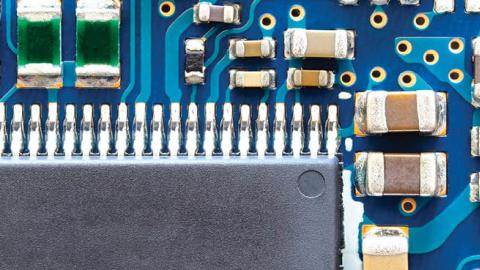Big news in the microchip war between the U.S. and China broke last week. American semiconductor giant Intel will be building a new $20 billion facility in Arizona-consisting of two new semiconductor fabrication facilities, or fabs, which will produce advanced semiconductor chips. Intel already runs four other fabs in Arizona, including Fab 42, the company’s largest chipmaking factory in the United States.
This latest effort is reportedly the biggest private sector investment in state history, and will help to put Intel back in prime position as a U.S.-based microchip producer.
This is far more than good news for Intel, and a significant boost in Arizona business and jobs (the new fabs are expected to generate 3,000 new high-tech, high-wage jobs and 3,000 construction jobs, as well as employment for another 15,000 supporting workers). It opens a new chapter in America’s pushback against its long decline in leadership in the microchip industry.
Just as the U.S. learned the perils of depending on others, especially OPEC, for its energy supply, so we are confronting the danger of letting other countries control our supply of semiconductors which are the essential fuel of the digital revolution.
In previous articles I’ve discussed the estimate by the Semiconductor Industry Association of the $20-50 billion investment needed to restore our competitive edge in the global chip industry—and the CHIPS For America Act, which is now part of the latest National Defense Authorization Act (NDAA) and aims to invest billions of dollars to restore and re-shore American chip manufacturing leadership.
This challenge is far bigger than just one company or two new fabs can meet. This is about winning a major struggle in the high-tech war with China. China is a net importer of semiconductors, relying heavily on foreign manufacturers—notably those in the U.S.: in fact, China imported $350 billion worth of chips in 2020, almost a 15 percent jump over 2019. However, China is also pushing hard to achieve independence from U.S. suppliers, and eventually dominance over the entire semiconductor sector.
That effort, and the competition with the U.S., is starting to converge on one place: Taiwan.
Today Taiwan accounts for 60 percent of the world’s semiconductor annual revenue, while Taiwan Semiconductor Manufacturing Corporation (TSMC) is home to the biggest semiconductor foundry in the world. Both US and China realize the stakes in securing the Taiwanse supply chain by winning over TSMC as an ally. That’s why the government incentivized TSMC to build a fab here in the U.S., also in Arizona—and why China was recently accused of trying to illegally recruit engineers away from TSMC.
But with stakes so huge, it’s not a shock that military experts see China looking for more drastic ways to secure Taiwan’s semiconductor industry—and also cripple world’s access to the island democracy’s chip output.
Here the issue of China’s seventy-year effort to derail Taiwan’s independence by force if necessary, takes on new significance in the on-going chip war. If China were to invade and shut off access, the economic cost to the rest of the world, and the U.S., could be staggering.
That’s a powerful reason for the U.S. to stand strong supporting Taiwan independence and democracy. But it’s why we should applaud Intel’s expansion in Arizona, and find other ways to encourage U.S. reshoring of semiconductor production.
This won’t be easy; Intel has taken on a mammoth challenge and it will be a long time before the U.S. will be totally independent of foreign-sourced microchips, including from Taiwan.
In late February President Biden met with a bipartisan group of lawmakers to discuss a global shortage of semiconductors in the wake of the COVID crisis, that’s hurting the auto industry and other manufacturers. A statement from the White House afterwards read in part, “The United States is the birthplace of this technology, and has always been a leader in semiconductor development. However, over the years we have underinvested in production—hurting our innovative edge—while other countries have learned from our example and increased their investments in the industry.”
We’re still waiting for a comprehensive national strategy to regain our leadership in semiconductor manufacturing. We can’t afford to wait until warships and bombers swarm the Taiwan Strait, while the fate of the digital age hangs in the balance.
Read in Forbes

















